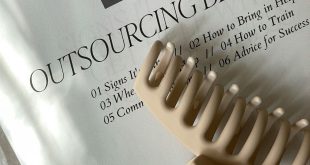Resumes: The Old and the New
Modern technology has vaulted job hunting into a world that requires you to be at least digitally competent if not savvy. But regardless of how advanced your search can get, I still think it’s smart to have good-old-fashioned copies of your resume. Start with a formatted version in a Word program; keep it simple and clean. Basic fonts like New Times Roman and Arial are good choices as they reproduce well on any computer. Save it as a Word document. You can copy this version on nice paper and send it in the mail. Then you will want to convert it to a PDF so it can be opened in either Mac or PC easily. Finally, save your work as an unformatted text document, which is a .txt file you’d open in an application like Notepad. Having your resume saved in all three ways will allow you get the information to prospective employers quickly and in the format of their choice.
Unless the company has stated not to send hard copy resumes and letters, I recommend starting with the digital version and following it up with a printed. This way they see your resume twice and it can give you bonus points for creativity and neatness if these are important to your line of work. For example, if you are some type of designer or artist, you might want to do something a little more creative than cutting and pasting text into a box. So, if given the opportunity, send a hard copy.
What Should I Say?
These days you don’t see the Objective line too much. Most have traded it in for an Executive Summary or Summary of Qualifications. This tough job market requires you to say what separates you from the rest right up front. I know your mom probably taught you not to brag, but this is one time to pour on the self-confidence. Keep in mind, there is a difference between highlighting your good points and exaggerating or lying about your accomplishments. Just be truthful and as accurate as you can be. Let them know why they would be a fool not to hire you.
Putting your last positions in chronological order is usually best unless you have taken several breaks for school or other personal reasons. If that is the case, try creating a resume that points out your skills and proficiency more than your job history. The same is true with your education; if you have little to no higher education, you can place it at the bottom where it won’t get as much attention.
Always make sure that your contact information is current and professional. In other words, don’t send a resume from an email that says Bambie is hot (at) Gmail (dot com). You get the idea. Don’t send a photo or personal references unless they ask for them.
Four Eyes Are Better Than Two
It is imperative that you have someone else proofread your resume and cover letter before sending it. You wrote it; therefore, you might not see your own mistakes. If you know someone who writes well or at least has good grammar and spelling, let them proof and even edit your materials if need be. If you can afford to hire a professional resume writer, do it. I was recently introduced to Brigitte, owner of The Resourcer, a company that offers professional services; such as, resume writing, marketing, and career counseling. Check them out at http://www.theresourceronline.com/. I know she even ran a contest recently to help women who are out of work. You can read the article at http://amominredhighheels.com/meet-brigitte-from-the-resourcer/ . If the money isn’t there right now, you can always look online for samples or follow a template provided by programs like Microsoft Publisher.
More Than a Resume
If you have the know-how and the resources, you might consider creating a personal website or blog. If you have acquired a certain level of success in your field, this is a great way to put yourself out there. Perspective employers might Google your name; these sites will provide them with additional information and a taste of what they can expect from you as an employee. There are businesses that specialize in setting up blogs and websites. I highly recommend http://www.rootsm.com/. If you can’t afford the full service, hire them to consult until you get the hang of it.
Also, be careful about social sites like Face book and My Space. Make sure your content, including photos, tagged photos, text, profiles, and your walls are free of anything that might embarrass or even discredit you.
Pay close attention to the resume portion of job hunting whether it be a hard copy going snail mail or its digital cousin flying over the net. You never get another chance to make a first impression. Another important thing is your follow up. If you send a resume, letter, or have made verbal contact with a hiring manager, you should follow up with a phone call, email, or personal note. Keep in mind they haven’t hired you yet; think quality, professionalism, and courtesy.
In part three of The Best Interview Strategies, we will talk more about the actual interview; what to say, what not to say, and some damage control techniques. Until then, be well.
Photo by http://sifu.deviantart.com/art/Gorgeous-Geek-94393110
 Women's Life Link Be Well, Be Happy, Be YOU!
Women's Life Link Be Well, Be Happy, Be YOU!




